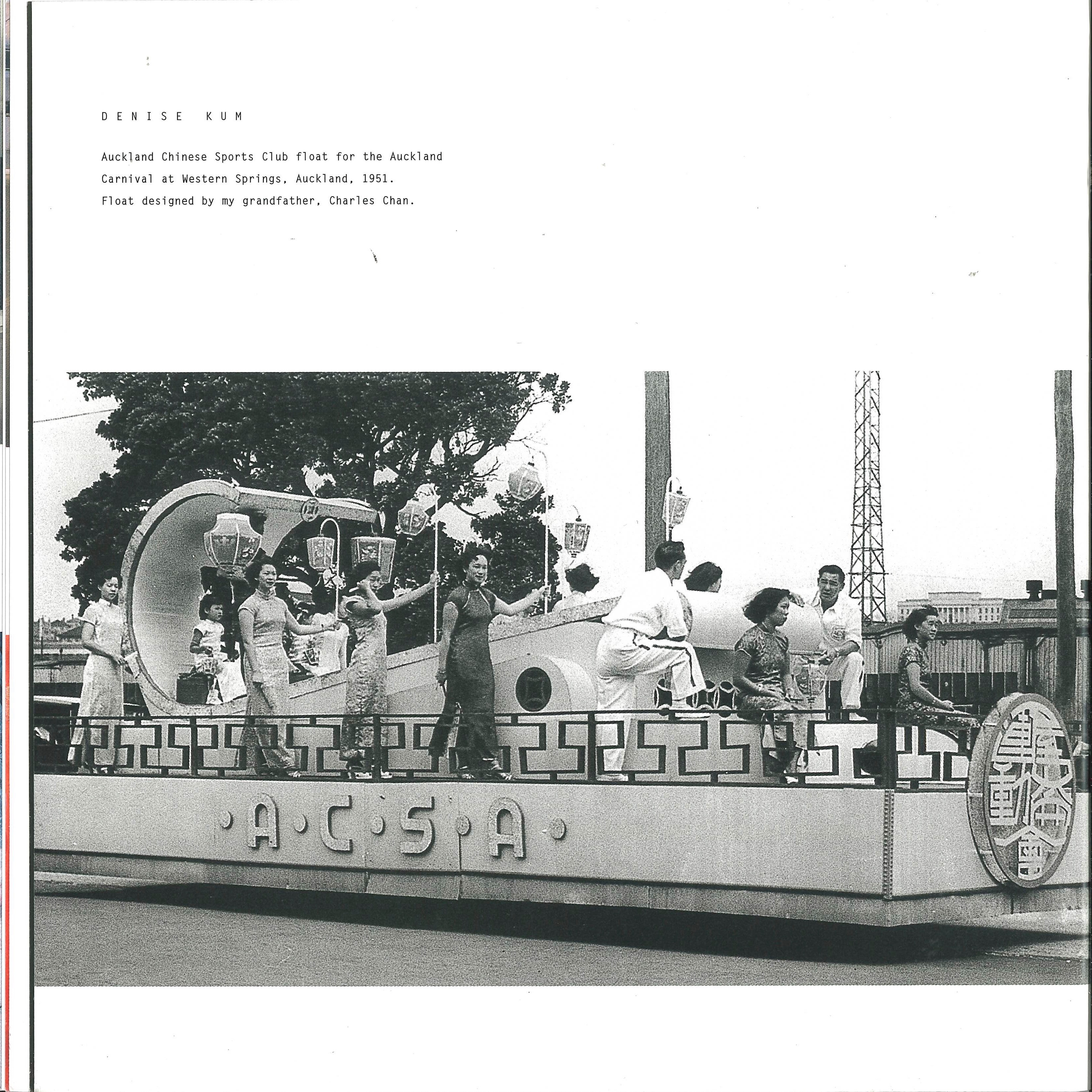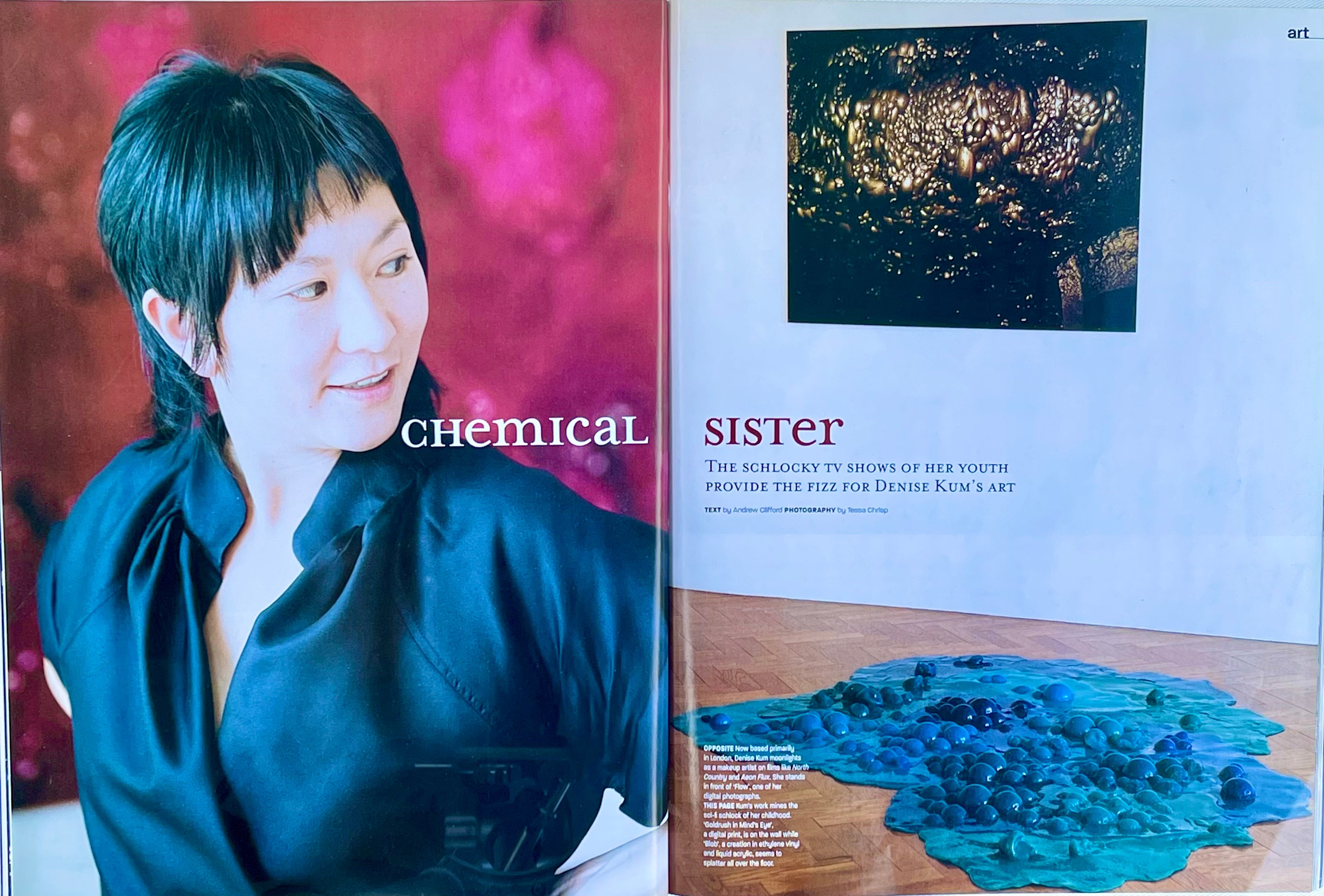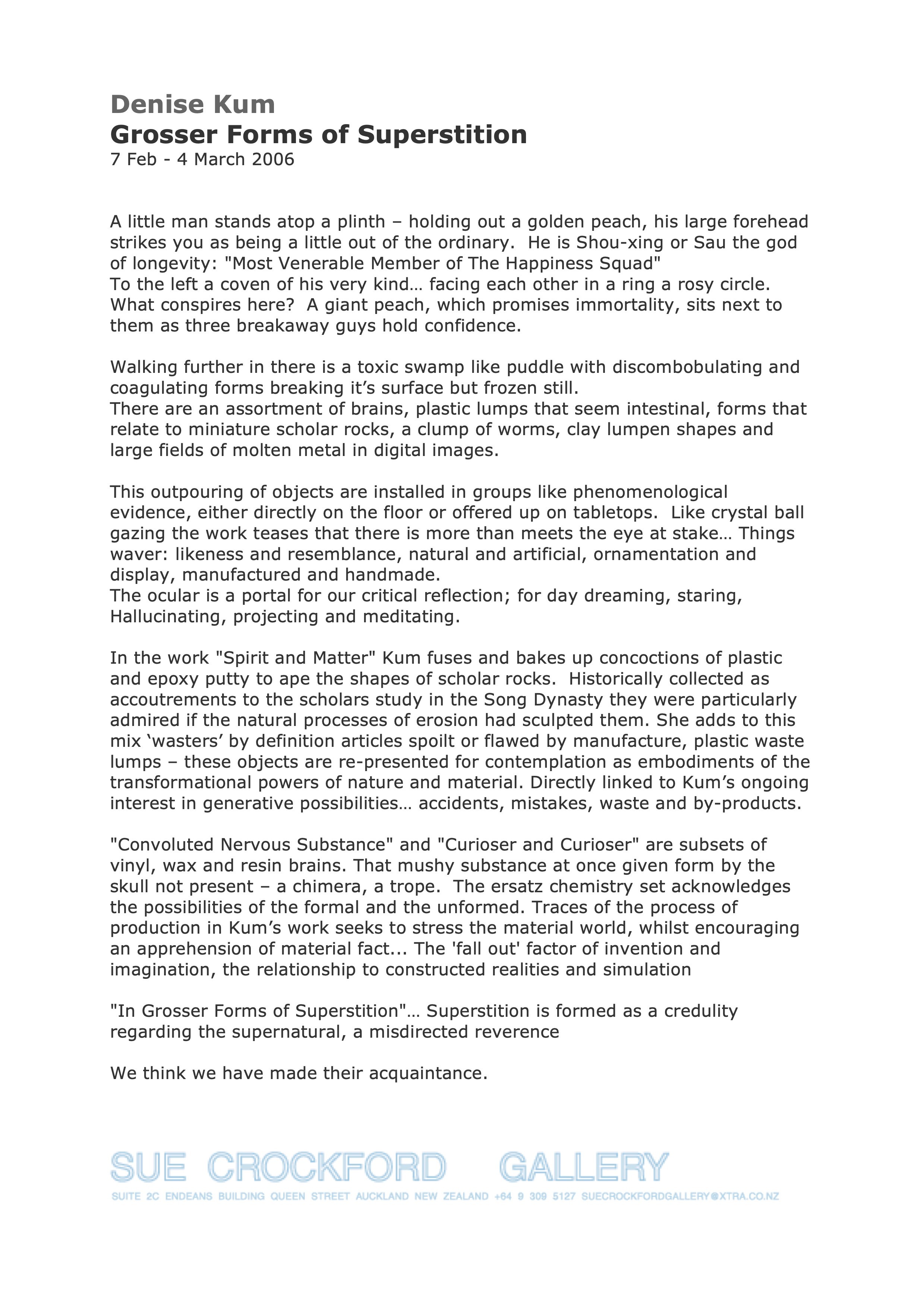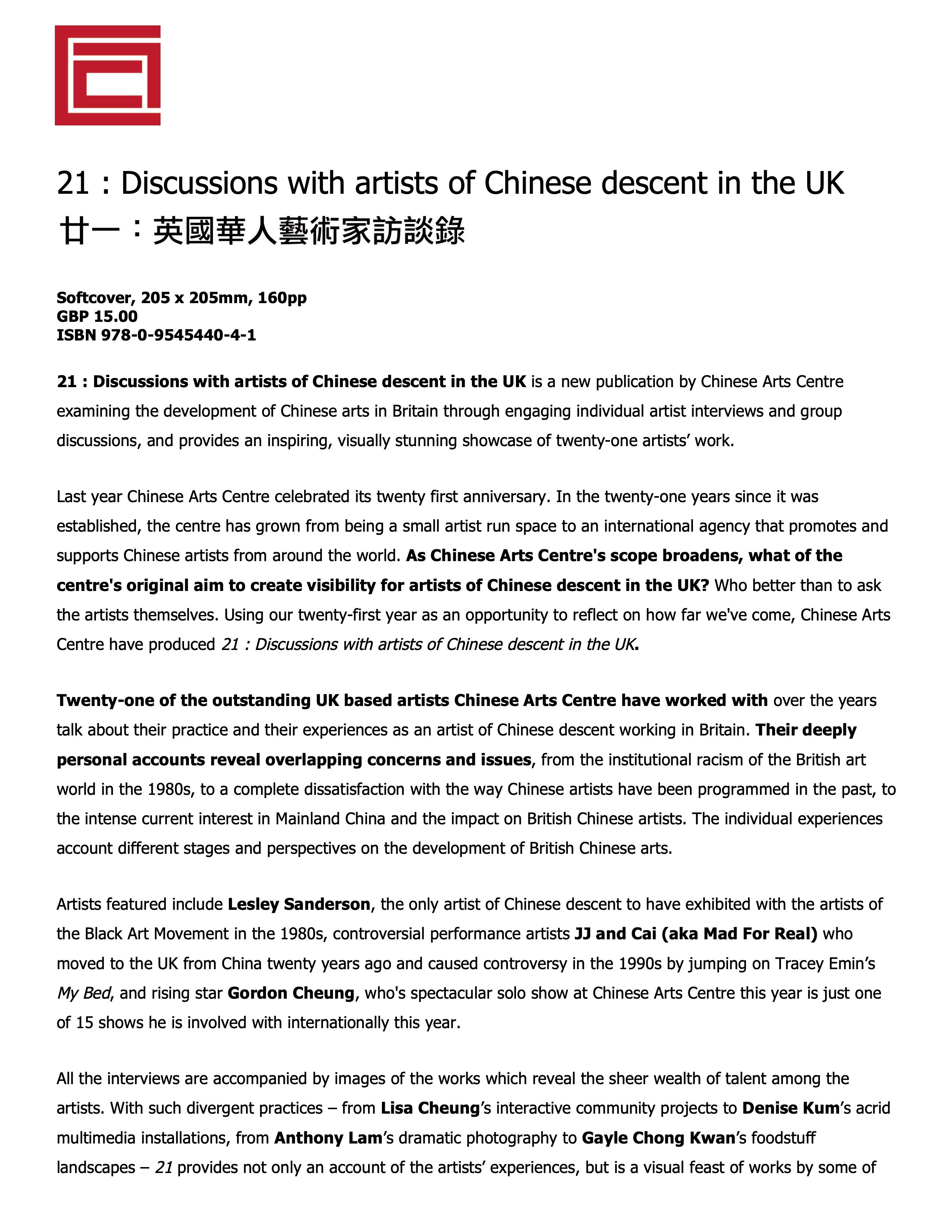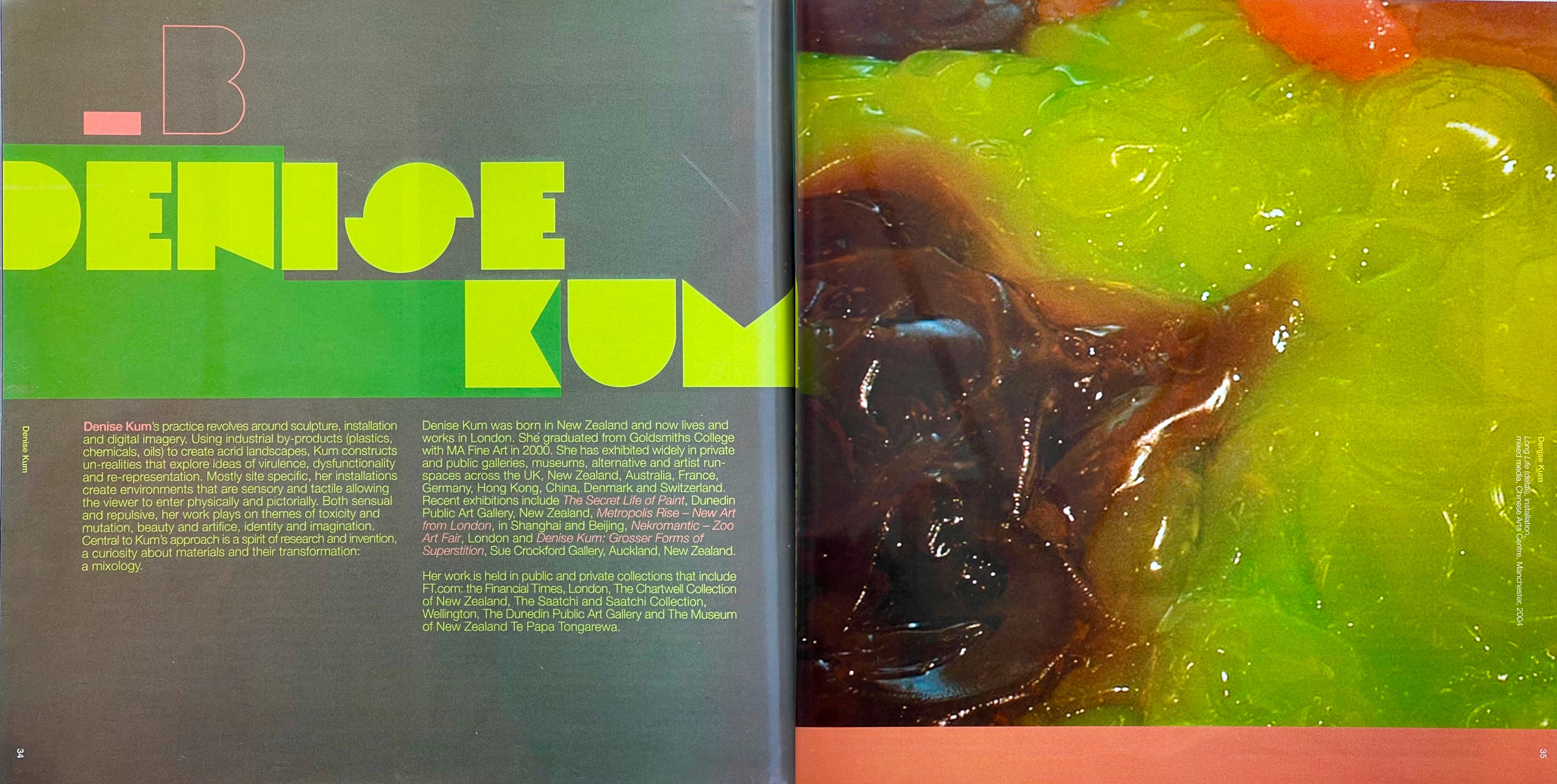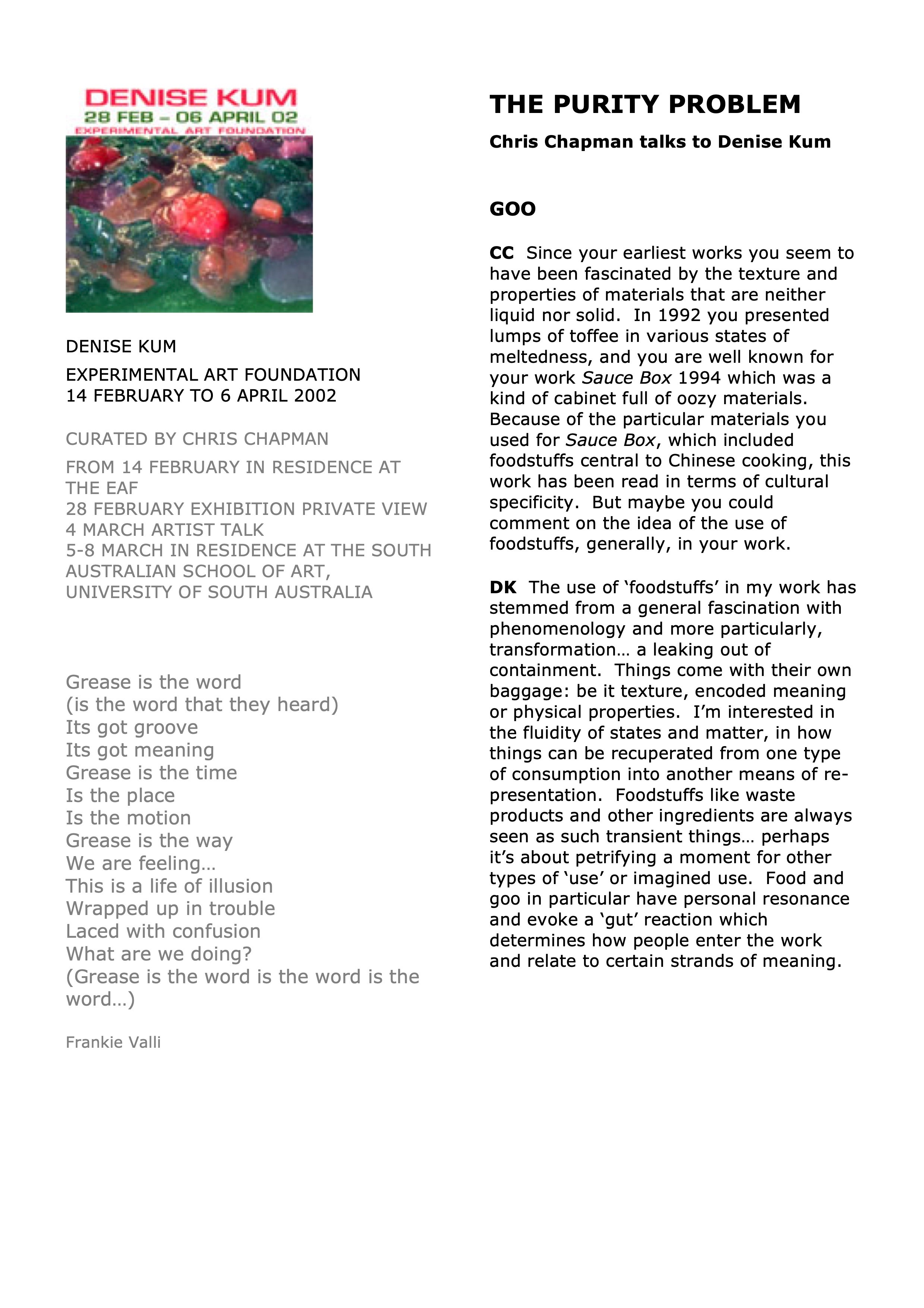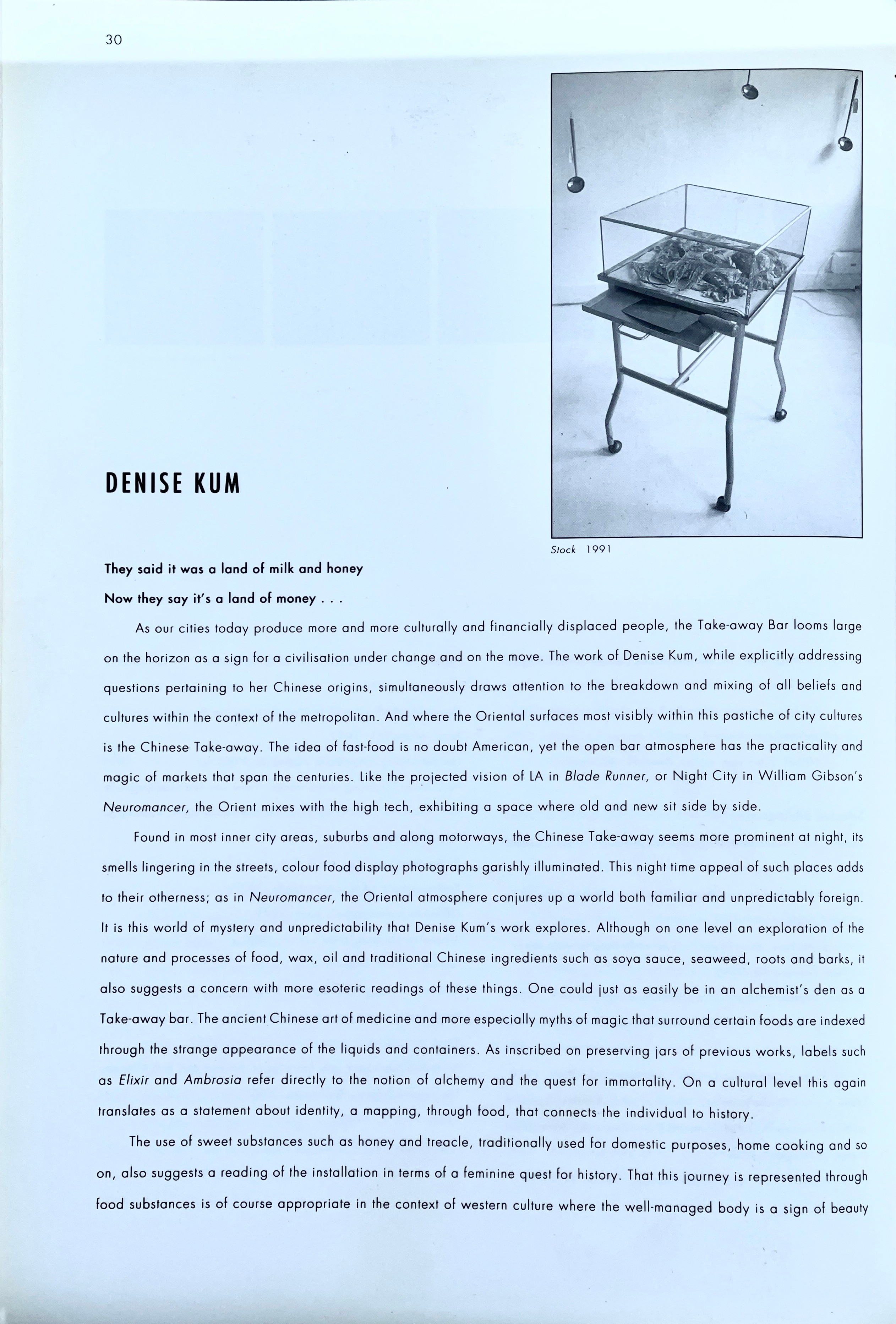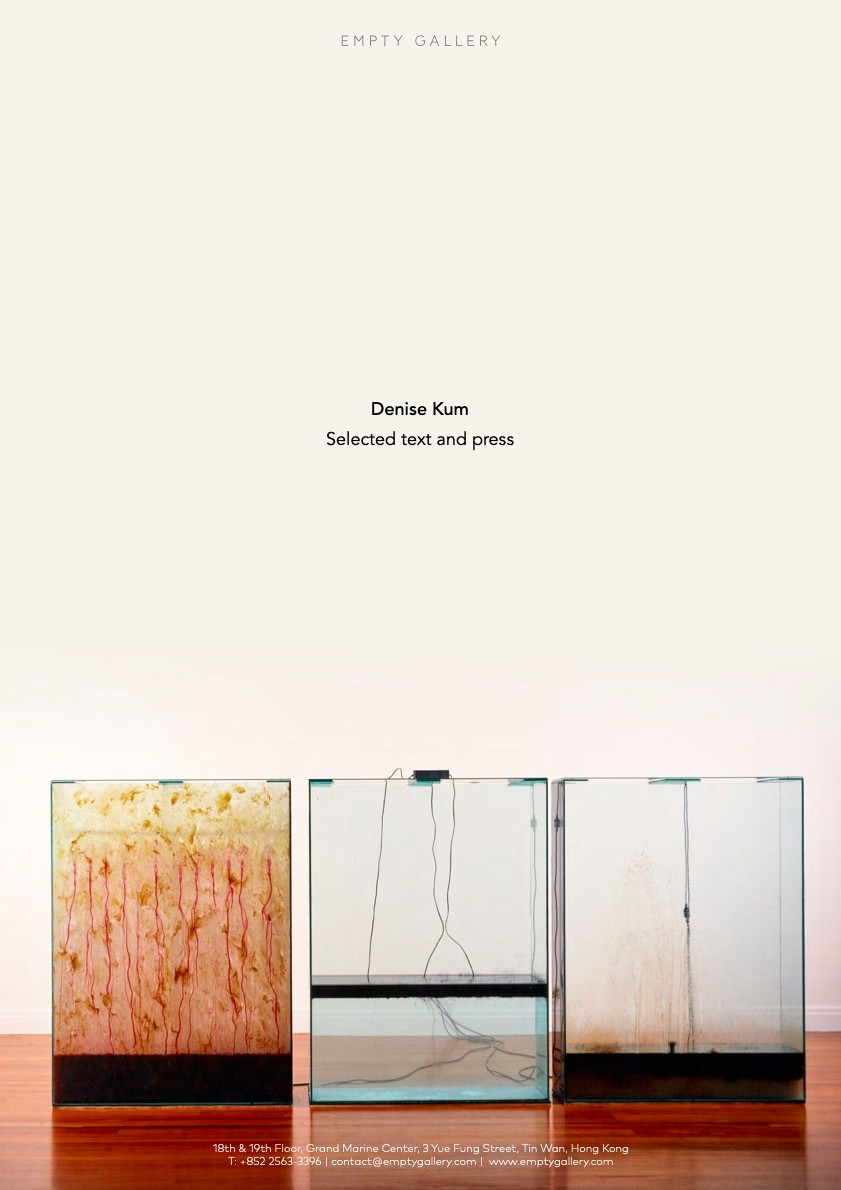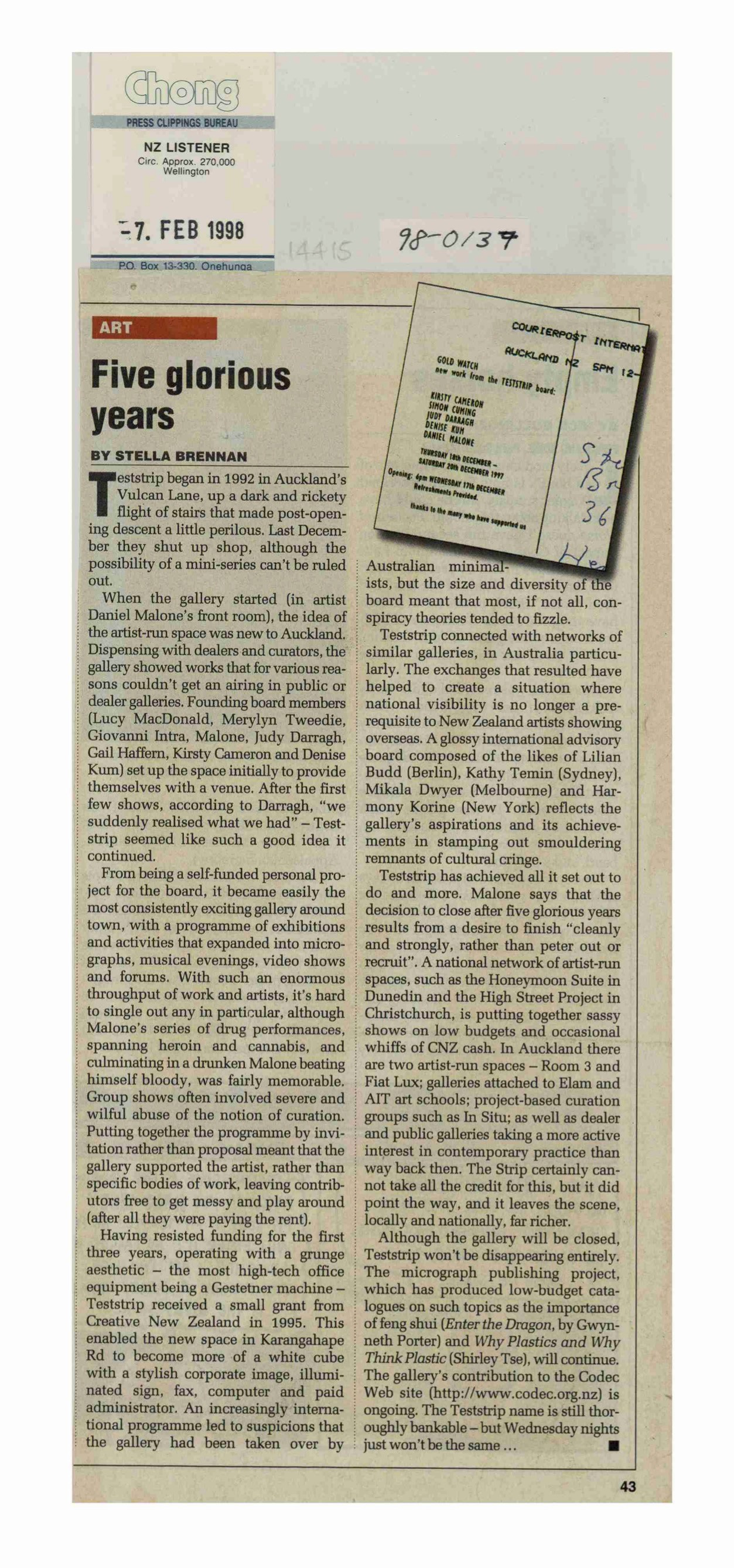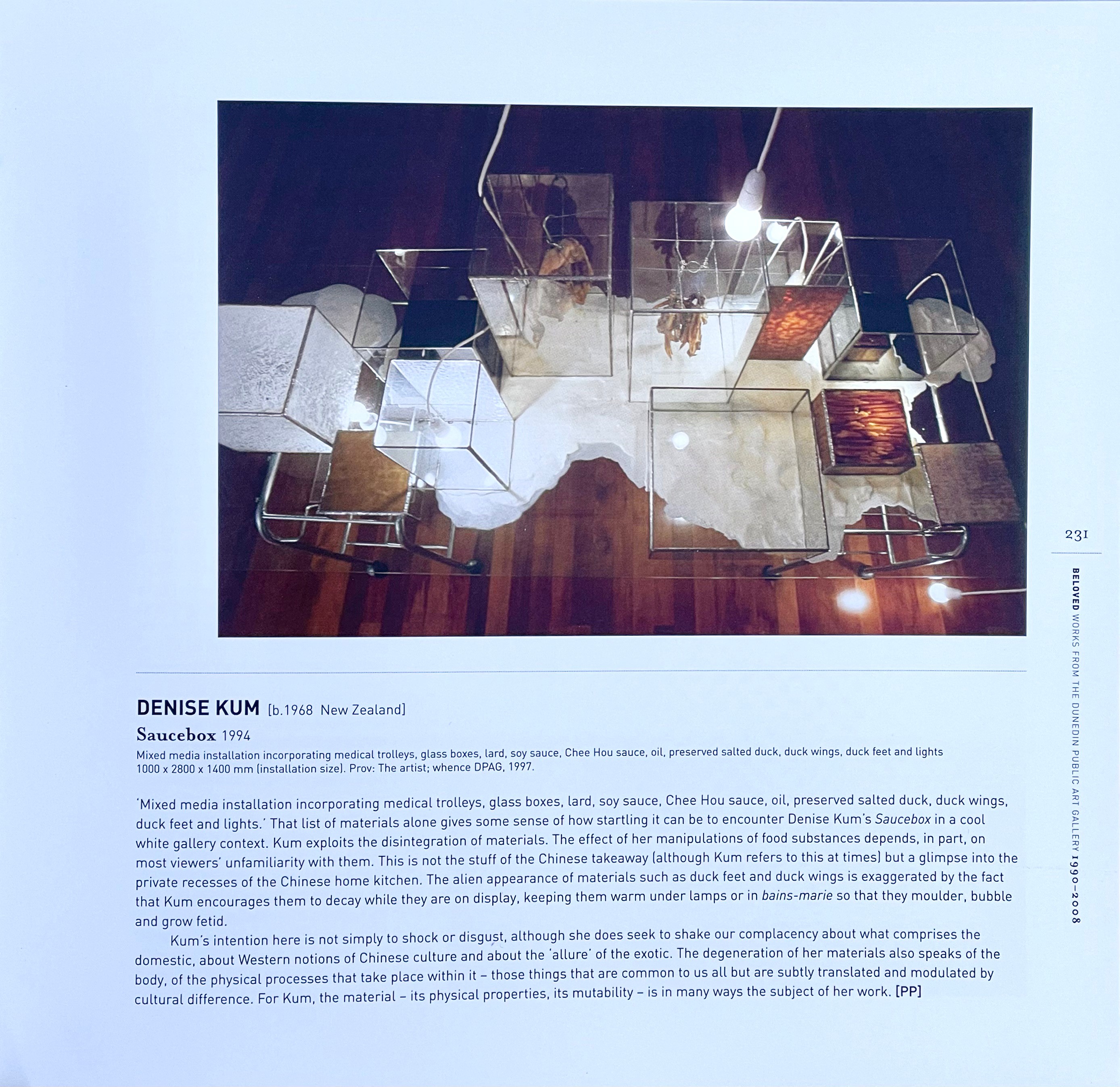INFO
| Name | Denise Kum (she/her) |
| Born | 1968 |
| Country of Birth | Aotearoa |
| Place of Residence | London |
| Ethnicities | Chinese |
| Dealer Gallery | Empty Gallery |
| Artform | Visual arts, Screen, Design |
| Decades Active | 1990s, 2000s, 2010s, 2020s |
ABOUT
Denise Kum is a Chinese New Zealand visual artist and designer based in London. Known for using unconventional materials such as foodstuffs and synthetic substances, Kum’s sculptural work explores processes of decay and mutation. Alongside Yuk King Tan, Simon Kaan, Luise Fong and Haruhiko Sameshima, Kum was part of a small group of Aotearoa Asian artists who came to prominence during the 1990s. Kum is also an acclaimed makeup and hair designer working in fashion, film and television — a vocation she began whilst still at art school.
Kum grew up in Tāmaki Makaurau Auckland. In becoming an artist, she has cited the influence of her grandfather Charles (Chas) Chan (b. 1912, Dannevirke), an artist who designed the Chinese Sports Club float for the Auckland Carnival at Western Springs in 1951, as well as yearly decorations for the Chinese Ball . She attended Elam School of Fine Arts, graduating in 1992, and in the same year was a founding member of influential and enterprising artist-run space Teststrip. Remembered for its experimental and ambitious exhibitions, Teststrip radically altered the local art scene with many associated artists, including Kum, going on to garner both national and international recognition.
During her time at Elam and upon graduating, Kum exhibited prolifically. Her inclusion in major exhibitions such as Localities of Desire (1994) at the Museum of Contemporary Art, Sydney, and Fusion: Hong Kong/Auckland artist exchange (1996) at Hong Kong Arts Centre and Auckland Art Gallery, cemented her prominence as a contemporary artist, both in Aotearoa and abroad. Kum was also represented by significant dealer galleries Hamish McKay in Pōneke and Sue Crockford in Tāmaki Makaurau, where her work was frequently exhibited throughout the 1990s and 2000s.
Kum’s early work was characterised by materials that visually alluded to minimalism such as steel and glass, containing or supporting viscous, formless substances that often intruded on the sense of smell. Whilst recognising the beauty and decay of organic processes, any notion of sentimentality was undercut by a frequent use of harsh lighting and an ambiguous symbolism which permeated the work. Kum presented in-your-face meditations on the aesthetics of mortality, bringing together “ideas of waste, utility, dysfunctionality and re-presentation” through a formalist sculptural practice.
Sauce Box (1993), exhibited in Localities of Desire, included some of the ingredients for a meal of Peking duck arranged within glass boxes on stainless steel hospital trolleys. The work was described by fellow founding member of Teststrip, Giovanni Intra (1968–2002) in his essay on Kum for Art & Text 52, 1995, 'Toxic Taste':
Appearing as a decaying skyline heaped on a street vendor’s cart, Sauce Box comprises a reversal of the Vanitas tradition in Dutch still life. But nothing here forestalls the threat of decomposition as is achieved in Vanitas, which attempts to trick mortality through the virtues of painterly craft. On the contrary, Sauce Box revels in the processes of rot and organic dissolution. The materials are left to the ravages of the open air. This erosion of form - the stinking, dripping, and corroding - points to the inevitability of decay, synonymous with the sculptural act.
Kum left Aotearoa for London in 1999, where she gained a Masters in Fine Arts at Goldsmiths College in 2000 and her work became further characterised by distinctive overflowing forms. Using byproducts of petroleum with colours of toxic brightness, her large-scale installations — such as Flocculate Flow (2003), shown in Bloom: mutation, toxicity and the sublime (2003–2004) at the Govett Brewster Gallery — covered the floor with a mutant, geothermal landscape of pools and protrusions spilling into each other underneath a boardwalk-style pathway.
Kum has continued to exhibit both in Aotearoa and abroad, and is represented by Empty Gallery in Hong Kong. She is also a makeup, hair and prosthetics designer for film productions. She has worked on several high-profile feature films, including Whale Rider (2002) and Mulan (2020) both directed by fellow New Zealander and Elam graduate Niki Caro, and in 2021 was nominated for awards in three categories by the Hollywood Make-Up Artists and Hair Stylists Guild for her work on Mulan.
Kum is a second-generation Chinese New Zealander on her father's side, and third-generation on her mother's side. Her family's role in the market gardening history of Aotearoa, as well as her grandfather's artistic and musical abilities, are documented in a number of Chinese New Zealand history publications including Har Gee Chans in New Zealand (2014, p. 23–34), Zengcheng New Zealanders (2006; includes artworks by Kum) and Sons of the Soil (2012, p. 352–353).
LINKS
Key works / presentations
2014 — A world undone, Auckland Art Gallery Toi o Tamaki, Tāmaki Makaurau
2010 — Beloved, Dunedin Public Art Gallery, Ōtepoti
2009 — Taste: Food and Feasting in Art, Auckland Art Gallery Toi o Tamaki, Tāmaki Makaurau
2009 — City, The Academy of Arts, Tsinghua University, Beijing
2007 — The Secret Life of Paint, Dunedin Public Art Gallery, Ōtepoti
2006 — Metropolis Rise — New Art from London, CQL Centre Moganshan, Shanghai & DIAF 06, Space 798, Beijing
2004 — Shapeshifters, M-Project, Galerie Mitterand, Paris
2004 — Long Life, The Chinese Art Centre, Manchester
2003 — Bloom, Govett-Brewster Art Gallery, Ngāmotu
2001 — Alive!: Still Life into the Twenty First Century, Adam Art Gallery, Pōneke
2000 — Plastika, Govett-Brewster Art Gallery, Ngāmotu
1998 — Leap of Faith, Govett-Brewster Art Gallery, Ngāmotu
1998 — Currents, Govett-Brewster Art Gallery, Ngāmotu
1998 — 11th Biennale of Sydney, Sydney
1997 — Thinking About Contemporary Art, Centre of Contemporary Art, Ōtautahi
1996 — Transfusion/Fusion, Hong Kong Arts Centre, Hong Kong and Auckland Art Gallery Toi o Tāmaki, Tāmaki Makaurau
1995 — The Nervous System, City Gallery Wellington and Govett-Brewster Art Gallery, Pōneke and Ngāmotu
1995 — Northern Exposure, McDougall Art Annex, Ōtautahi
1995 — Recent Sculptitecture, Horribly Desirable, Hamish McKay Gallery, Pōneke
1994 — n+1 Cultures, Artspace, Tāmaki Makaurau
1994 — Art Now: The First Biennial Review of Contemporary Art, Museum of New Zealand Te Papa Tongarewa, Pōneke
1994 — Localities of Desire: Contemporary Art in an International World, Museum of Contemporary Art, Sydney
1994 — Critique: The International artists’ museum fax project, First Draft, Sydney
1993–94 — Mediatrix, Artspace and the Govett-Brewster Art Gallery, Tāmaki Makaurau and Ngāmotu
1993 — Under My Skin, High Street Project, Ōtautahi
1993 — White Light Wet Heat, window work at Auckland City Art Gallery, Tāmaki Makaurau
1993 — Work — Denise Kum & Julian Dashper, Fisher Gallery, Tāmaki Makaurau
1993 — Denise Kum, Hamish McKay Gallery, Pōneke
1993 — Illume, Teststrip, Tāmaki Makaurau
1992 — Teststrip Stock Show, Teststrip, Tāmaki Makaurau
Key awards
2004 – ‘Breathe’ Residency, Chinese Art Centre, Manchester
2003 – Creative New Zealand New Work Grant
2002 – ‘EAF’ Residency, Experimental Art Foundation & School of Art, University of South Australia, Adelaide
2000 – Saatchi Prize, Goldsmiths College & Charles Saatchi, London, finalist
1999 – Creative New Zealand Project Grant
1999 – UK/ NZ Link Foundation Fellowship
1999 – NZCA Grant
1995-1996 – Creative New Zealand Fellowship
1994 – Australia / New Zealand Foundation Grant


